Shedding your clothes, sinking into a tub of steaming water and staring up at soothing hand-drawn murals depicting the idyllic countryside won't just transport you into a Zen-like state of oblivion; it's one of the most uniquely Japanese experiences you can have.
Know before you go
Sento are divided by gender and guests wash themselves before bathing. Towels, soap and shampoo aren't always provided. Entrance fees are regulated and cost Y500 for adults. There is an additional fee to use the sauna. Many family-run small sento don't accept credit cards.
Public bathhouses (sento) have been an important part of daily life in Japan for centuries. They are thought to have first appeared in Japan in the 12th Century and became particularly popular during the Edo period (1603-1868). For many Japanese who didn't have their own bathtubs at home, the local sento was a place to cleanse oneself while socialising with friends and neighbours.
As the Japanese economy expanded in the 1960s-1970s and private bathrooms became increasingly common, the number of sento have steadily declined. Yet, these days, nearly every neighbourhood in the capital still has at least one sento, and with a new generation of sento owners updating their bathhouses with saunas and other facilities, sento are currently enjoying a revival among both young and old.
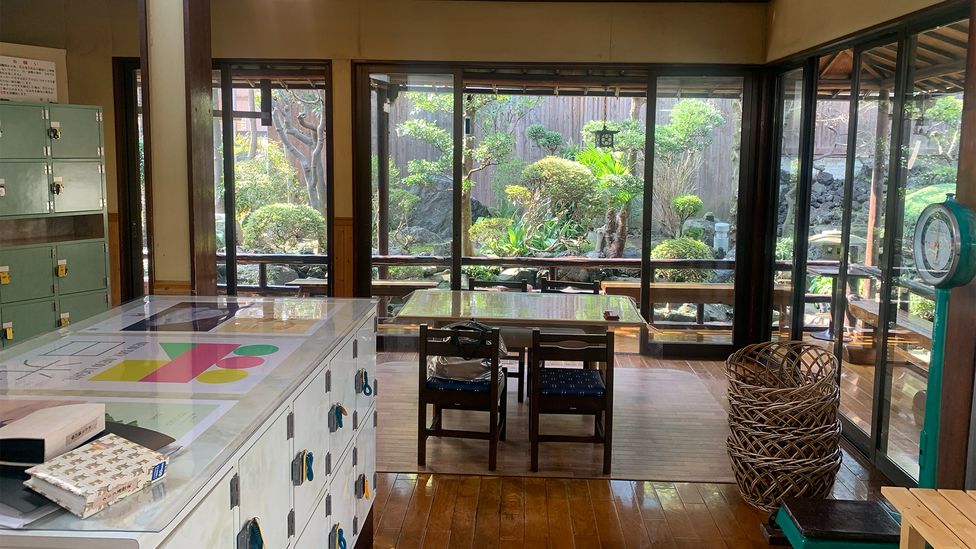
The men's changing area at Takenoyu looks out on a tranquil garden (Credit: Michiyo Nakamoto)
1. Azabu Kokubisui Onsen Takenoyu
Slipping into a pool of chocolate-brown water takes some courage, but this "black beauty water", as it is locally known, is what makes a visit to this sento on a quiet side street in Tokyo's bustling Azabu Juban neighbourhood special.
Takenoyu started as a restaurant in 1913, and according to its owner, Hiroshi Higuchi, the water comes directly from a hot spring under the bathhouse. Its unusual hue is due to a combination of peat, mud and volcanic ash stemming from the ocean floor, near the spring's source.
Despite its muddy look, the bath water is actually silky-smooth and feels surprisingly soft on your skin. Sitting in one of Takenoyu's bathtubs is like soaking in a pool of skin lotion. The water's healing properties are attested by local chefs, who come to Takenoyu to soothe their hands after long days of washing and scrubbing.
Takenoyu is extremely popular and regulars tend to leave their belongings at the washing up areas. The cold bath, at 14C, is used for pouring water over the body to cool down and contains undiluted "black beauty water". This is denser than the water in the hot baths, which has been boiled and diluted.
Website: https://takenoyuazabu.wixsite.com/takeno-yu?lang=en
Neighbourhood: Azabu Juban
Address: 1-15-12 Minami-Azabu, Minato-ku, Tokyo,
Phone number: +81-3-3453-1446
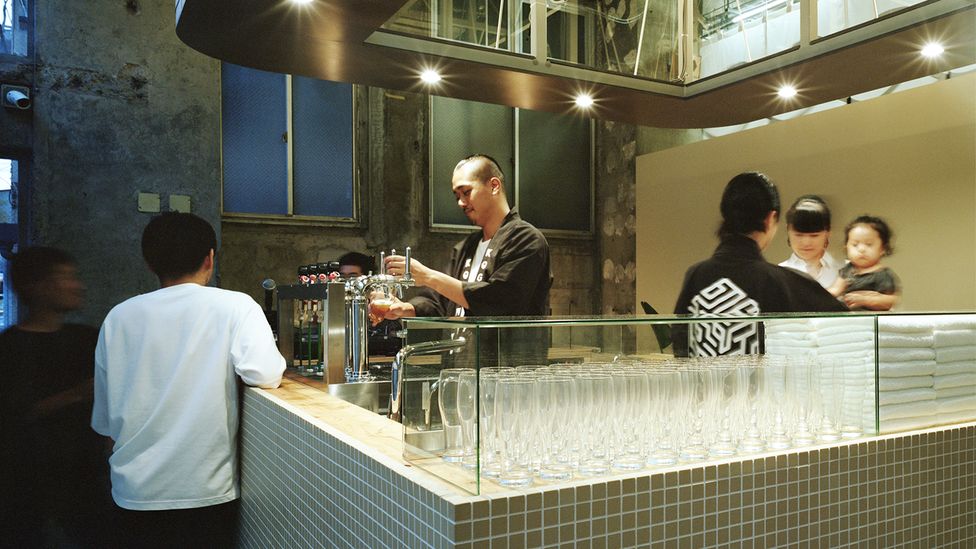
Koganeyu has been completely revamped into a modern sento (Credit: Yurika Kono)
2. Koganeyu
There's cold beer on tap, music cascading out of the overhead speakers and a stream of mostly young men eager to wash away the day's stresses at Koganeyu, a trendy sento with a 90-year history.
Koganeyu became especially popular among young people after Tomoko Shinbo, the owner, and her husband, Takuya, revamped it in 2020, transforming a traditional sento catering to mostly elderly locals into a popular and more modern destination for sauna lovers. As Takuya explained, if you could listen to music while taking a bath, enjoy a cold beer afterwards, eat good food and then go to bed, "wouldn't that be fantastic?".
To that end, they've added a cafe on the second floor, dormitory-style rooms allowing overnight accommodation and even a laundromat. Special events, such as a DJ night or a sauna retreat for overnight guests, are held periodically. Yet, for many bathers, Koganeyu's key attraction is the men's sauna facilities. In addition to a spacious sauna room, there is a 90cm-deep water bath (set at 15C) and an outdoor terrace to take in fresh air. (On Wednesdays women get to use the men's side of the sento.)
Website: https://koganeyu.com/
Neighbourhood: Kinshi-cho
Address: Kanazawa Mansion 1F, 4-14-6 Taihei, Sumida-ku, Tokyo
Phone number: +81-3622-5009
Instagram: @koganeyu1010
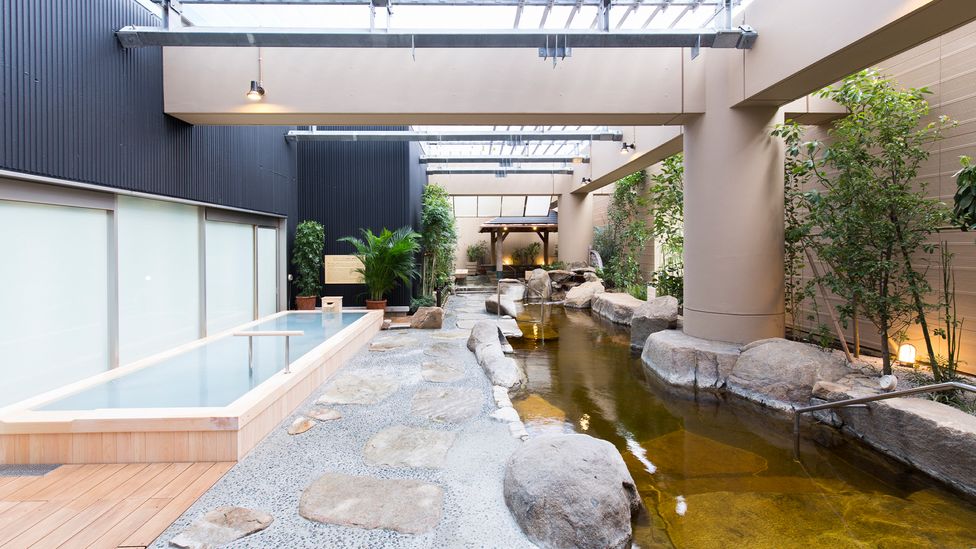
Located inside Tokyo Dome City, Spa LaQua is an upscale super-sento (Credit: Spa LaQua)
3. Spa LaQua
Known as a "super-sento" (a sento that also has restaurants, saunas and other facilities), Spa LaQua is like a theme park where the theme is body pampering. There are multiple baths for men and women, saunas, several lounges, a beauty salon offering everything from lymphatic drainage massages to hair colouring, restaurants, a bar and a shop.
Tip
Located within Tokyo Dome City, a sprawling complex with an amusement park, more than 50 shops, a hotel and 70 restaurants, Spa LaQua itself is so huge that it would take several visits to fully enjoy all it has to offer.
If you fancy a quick nap, the main lounge offers comfortable reclining lounge chairs that come with individual TV sets and blankets . You can also stay overnight at an additional cost.
Be prepared to spend at least several hours here. In addition to a carbon dioxide bath, there is a bath containing oxygen and another with amber-coloured water containing sodium chloride, which is said to help with stiff shoulders and poor circulation. The most popular bath is the milky soda bath, which contains both oxygen and carbon dioxide. Soak in this soft water, and within minutes minuscule bubbles will form on your skin, giving it a soft, downy feel. The bath water comes from a natural spring located 1,700m underground.
Website: https://www.laqua.jp/en/
Neighbourhood: Korakuen
Address: 1-3-61 Koraku, Bunkyo-ku, Tokyo
Phone number: +81-3-5800-9999
Instagram: @aquacampaign
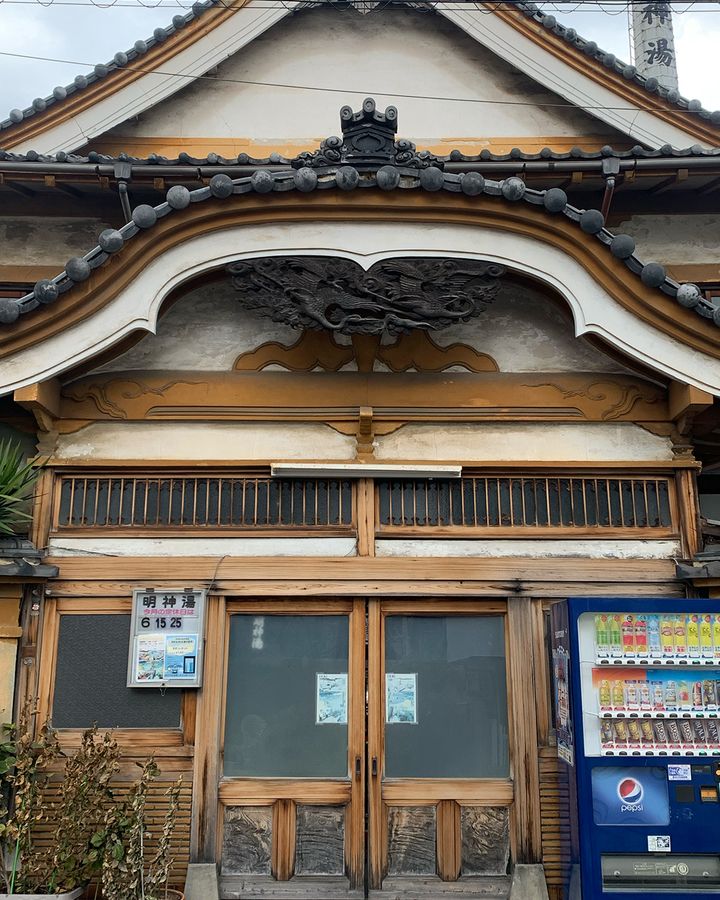
Myojinyu's gabled roof is made with traditional "kawara" tiles (Credit: Michiyo Nakamoto)
4. Myojinyu
Myojinyu is the epitome of the classic Japanese sento and has been featured in many Japanese TV commercials and shows. Built in the style of a Japanese shrine and located in a quiet residential neighbourhood near the Haneda airport, Myojinyu is one of the few Tokyo sento that has retained its original structure since it opened in 1957. The gabled roof is made with traditional Japanese kawara tiles with a carved wooden phoenix on the facade.
Bathers can enjoy two different types of whirlpool baths as well as an herbal bath, which is infused with a different herb every day. The owners, Noboru and Mitsuko Oshima, heat the water the traditional way using firewood, which their customers say warms the body to the core. Noboru told me he personally cuts the wood himself.
The high ceiling and wooden floorboards, old-fashioned hairdryers and other vintage touches will take you back to the Showa era (1926-1989), when many houses in Japan were designed with a mixture of Japanese and Western elements.
After a good soak, head to the small garden to relax. It can be accessed via the engawa, an outside corridor along one side of the building.
Website: https://ota1010.com/explore/myojin-yu/?lang=en
Neighbourhood: Yukigaya
Address: 5-14-7 Minami-Yukigaya, Ota-ku
Phone number: +81-3-3729-2526
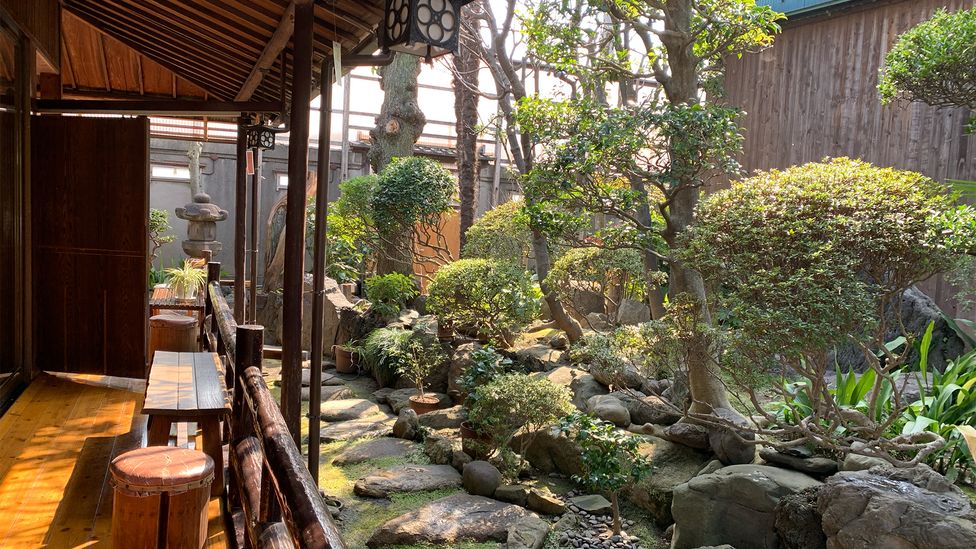
The outdoor garden and pond is one of the main draws at Takarayu (Credit: Michiyo Nakamoto)
5. Takarayu
Known for its magnificent garden and engawa outside corridor, which has led local media to dub it the "King of Gardens", and "King of Engawa", Takarayu is just four years short of its 100th birthday.
The shrine-style bathhouse, with its bright blue noren entrance curtain, stands out among the more modern houses on a quiet street just a stone's throw from the Arakawa River on Tokyo's north-eastern edge. The Japanese garden, which can be accessed from the engawa and the men's bathroom, features a pond with colourful Nishiki-goi carp swimming leisurely in the shadow of lush greenery. On Wednesdays, the men's and women's sides switch so that women can also enjoy the garden view while soaking in one of the four bathtubs.
The sento's herbal baths include combinations of jasmine, aloe, eucalyptus, mint and sandalwood, which change daily. Herbal baths are believed to stimulate circulation and help the body retain its warmth.There is also a bath containing germanium stones, which is said to stimulate circulation and help cellular regeneration. Head to the table and chairs on one side of the engawa to relax after bathing; you can pick up a can of beer or a bottle of chocolate milk on the way.
Website: http://www.slowtime.net/takarayu/about1/index.html
Neighbourhood: Kita Senju
Address: 27-1 Senju Motomachi, Adachi-ku, Tokyo
Phone number: +81-3881-2660
(Michiyo Nakamoto is a freelance journalist based in Tokyo who has enjoyed soaking in public baths in Tokyo and across Japan for many decades.)
---
Join more than three million BBC Travel fans by liking us on Facebook, or follow us on Twitter and Instagram.
If you liked this story, sign up for the weekly bbc.com features newsletter called "The Essential List". A handpicked selection of stories from BBC Future, Culture, Worklife and Travel, delivered to your inbox every Friday.
Bagikan Berita Ini














0 Response to "Tokyo's five best 'sento' public bathhouses - BBC"
Post a Comment